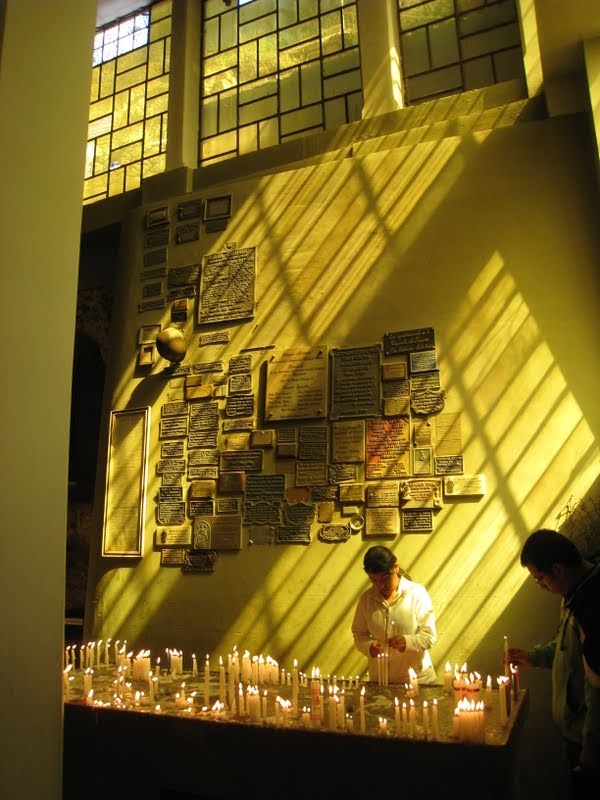So, here is the exterior of the church (also behind the miner monument above):
The interior is nice, traditional:
I like that their mural includes images from Carnaval:
Nothing makes you think that old mining tunnels would be beneath this church, yet next to this lovely contemplative area is the cavelike entrance to the miner's tunnels below:
You descend down what feels like a billion stairs:
Until you reach the bottom, which has old tracks on the ground, rails along the wall and display cases housing lots of really random old artifacts:
As you walk along, you also find this little statue in a creepy red light. This guy is El Tío, who represents the devil/the god of the underworld, and the miners would make offerings of alcohol, coca leaves, cigarettes and money (coins) so they would have good fortune while they were working in the mines.
One thing I got a kick out of was the little drawings used to describe some of the artifacts.
This next one shows how the miners used to steal silver, tin and gold from the mines.
They would wear these vests and fill them with whatever they were mining.
When you're finished exploring, you climb back up a different set of stairs, leading you to the miner monument.
Mining looks like hard work (seen "Zoolander"?), so it's nice that they're recognized somewhere:




















Neat place. It is like heaven and hell.
ReplyDeleteWow, that's so apt-- and obvious to me now, but I hadn't seen that poetic interpretation earlier. Thanks, blueberry! :-)
ReplyDelete